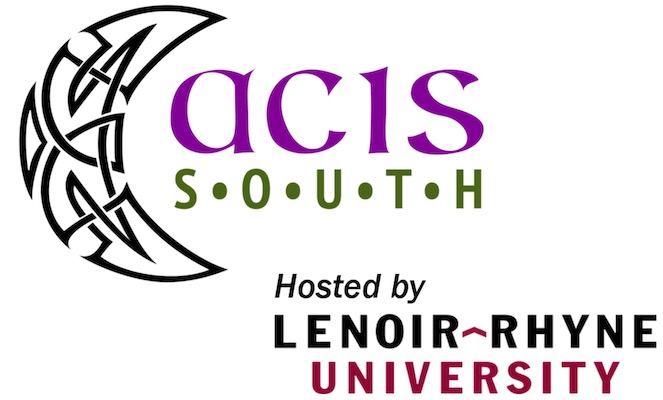Time, as queer theorists remind is, is both ideological and heteronormative. These four papers come together under a rubric of queer time to think about resistance to what Jack Halberstam calls “repro-time” and Elizabeth Freeman calls “chrononormativity,” the ways that gender and sexual identity may be synched into—and measured against—heteronormative temporal scripts of marriage, reproduction, social and economic productivity. Following Halberstam’s suggestion that we imagine queerness as not only sexual but also “an outcome of strange temporalities, imaginative life schedules, and eccentric economic practices,” we examine a diverse set of Irish literary texts to ask how queer representations may “open up new life narratives and alternative relations to time and space.”
Ed Madden
University of South Carolina
Professor of English at the University of South Carolina, Ed Madden’s articles on Irish queer cultures have appeared in Éire-Ireland, Irish University Review, Performance Ireland, and elsewhere, as well as the Routledge International Handbook of Irish Studies. Madden was the 2019 Neenan Research Fellow at Boston University Ireland.
“Under the Sign of the Clock: Queer Time, AIDS Time, Cleary’s Clock”
Emerging in a culture of silence, stigma, and condemnation, queer sexuality in Ireland might also be said to become visible under the sign of the clock. This paper focuses on the first AIDS fundraising song, “Under Cleary’s Clock” by the Radiators. First performed at a 1987 AIDS charity event, the song situates a gay voice beneath a department store clock in central Dublin that for a century served as an iconic rendezvous spot for rural families and courting couples. Though urban geography clearly facilitates the possibilities of gay sexuality in the song, the awaited lover never arrives, and certainty, identity, and relationship are all displaced into a spectrally figured future. The song thus illustrates Jack Halberstam’s argument that ideas of queer time emerge in the context of AIDS, but it also clearly locates both gay identity and (an aborted or foreclosed) gay relationship within a heteronormative temporal logic, within which gay identity is rendered too late or too early, never in synch with the commercial, temporal, and familial logics of Ireland.
Colleen Etman
University of South Carolina
“‘To die as lovers may’: Spatial Death in Carmilla”
While Sherida Le Fanu’s Carmilla includes typical Gothic spaces—the ancestral home, the crypt, the mysterious room—more interestingly the novella represents death as a physical location, a space that exists outside of heteronormative time and is not only beyond temporality but beyond heteronormative expectations. Through Carmilla’s metaphor of the larva, death is re-imagined as a space resistant to maturation and reproduction, though, the creature can only live as such encased within its place of death. Unlike early Eastern European vampires, who slowly but continuously decay, and modern American vampires, who are merely frozen in their youth, the Irish vampire is reliant on their place of death and the soil under their coffin to live outside of heteronormative time. This paper examines the spatialization of death as it relates to the Irish vampire. While the novella’s larval metaphor might suggest Kathryn Bond Stockton’s queer figure of “growing sideways,” instead this presentations insists that death—as depicted by the cocoon and the gravesite—is a liminal space that distorts time altogether.
William Parker Stoker
University of South Carolina
William Parker Stoker is a Ph.D. candidate in English at the University of South Carolina. He won the 2019 Meringoff Prize for Non-fiction by the Association of Literary Scholars, Critics, and Writers. A descendant of Bram Stoker, he also assists his family in maintaining the Bram Stoker Estate.
Alexandra Oberempt
University of South Carolina
Alexandra Oberempt is a MA student at the University of South Carolina, currently completing her master’s degree in 19th-century English and American literature. Her research interests include the Gothic, monsters, and dark romance.
“Aromantic Fairy Tales: Tangleweed and Brine’s Rejection of the Heteronormative Happy Ending”
Fairy tales are, in many ways, a blueprint for chrononormativity and the heterosexual ideal life, especially in the Disney era. Two people meet, fall in love, marry, and live happily ever after. With the prominence of fairy tales in pop culture, these lessons reinforce a heteronormative society. Deidre Sullivan’s Tangleweed and Brine turns this idea on its head and asks what might a fairy tale look like if we eschew heteronormative ideals? What might a fairy tale ending look like without romance? Can there be a happy ending without heteronormativity? These dark retellings imagine new ways to view familiar tales, and prompt an idea of fairy tales without chrono- or heteronormativity. This paper will analyze Sullivan’s rewrites to examine how heteronormativity shapes folklore – and how we can escape it.
